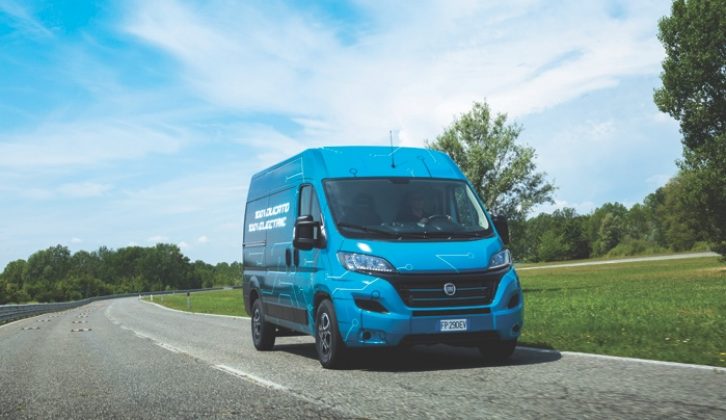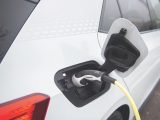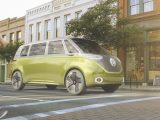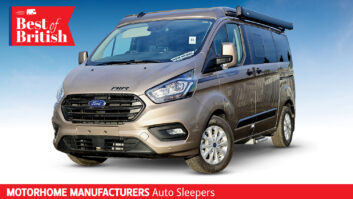On 4th February 2020, ahead of the UN’s climate change summit in Glasgow next November, the prime minister announced the Government is bringing forward the date for banning sales of new petrol and diesel cars to 2035. For the first time, hybrid vehicles will be included in the ban.
A fortnight later, the Government began a consultation process on the proposed ban. Motoring organisations have already voiced alarm.
The Society of Motor Manufacturers & Traders (SMMT) accused the Government of moving the goalposts. Its chief executive, Mike Hawes, said members were investing in a zero-emissions future, with 60 plug-in hybrids on the market and 34 more due this year.
“However, with demand still just a fraction of sales, it’s clear that accelerating a challenging ambition takes more than industry investment. We need to hear how the Government plans to fulfil its ambitions,” he added. The National Caravan Council (NCC) put out its own statement, echoing the concerns and saying there were still “many barriers” in the way of achieving the zero-emissions goal.
Model variants
However, Fiat – market leader in base vehicles – launched a prototype fully electric Ducato last summer. The first models should be rolling off the assembly line in Turin towards the end of the year.
Andy Parker, Fiat’s UK conversion manager, says electric models will be available for all van variants, except possibly the 5.41m-long SWB version, and in right – and left-hand drive.
Last summer, at the launch of the prototype, Fiat stressed that the initial focus will not be on motorhomes, but delivery companies, whose driving patterns – vehicles going relatively short distances and returning to a hub for charging – differ significantly from the longer, largely solo journeys most motorhomes will be making. Delivery vehicles might be better suited to the 320km range of the new vehicle.
In January, Mercedes-Benz unveiled UK pricing and spec for its new eVito. The front-wheel-drive vehicle has 80kW of power, 300Nm of torque and an average range of 92 miles. It has just started production on an all-electric version of its Sprinter, too. Ford hopes to have a range of 14 electric models on the market by the end of 2020, but it is still looking to the Government to support further roll-out.
Volkswagen, meanwhile, is investing £33bn in what it calls “emobility” over the next five years, a project which saw it launch the ID Buzz all-electric camper concept vehicle, with a 600km range, in 2017. A VW spokesperson added that “continued support” for the uptake of electric vehicles and the extension of charging are prerequisites for progress.
Charging points
So what do motorhome manufacturers, and van convertors in particular, think of the likelihood of all-electric ‘vans by 2035? The consensus seems to be that the infrastructure is still a way off.
Fiat’s Andy Parker points to the work of companies like Engenie in rolling out charging facilities. Engenie recently announced the launch of London’s first rapid-charging hub, in Stratford. Rapid charging, offering 100 miles of charge in 35 minutes, is seen as a priority.
VW teamed up with Tesco and charging pod supplier Podpoint to roll out charging points that allow shoppers to charge all electric vehicles for free. VW, which used the launch of the first pod at Tesco’s Milton Keynes in December to reveal its new ID.3 electric car, reckons shoppers could get about 22.5 miles of free charge in the average 50 minutes it takes them to shop. Since then, more than 100 stores have had a PodPoint installed.
But the NCC says such distinctly urban ventures don’t really alter the “woefully inadequate” provision in rural areas and at caravan parks.
It says many of its members worry that they will be out of range for most electric vehicles. Even sites that have installed charging points are worried about a sudden influx of new arrivals all needing to charge at the same time.
Such concerns have put Ian Hartley, founder of IH motorhomes, off the whole idea of electric models. He says the culture needs to be changed, as well as the infrastructure, and that people are still too worried about the possibility of a motorhome running out of charge miles from anywhere – and that will take longer than 15 years to change.
That’s not to say, however, that he isn’t going green at all. He is working with e-bike firm Eskuta on a tie-up. Motorcaravanners, Hartley thinks, will be more amenable to the idea of an electric vehicle they can use and recharge on-site, rather than relying on electricity for the whole journey.
But there are problems with converting that need addressing, too. One of the reasons the Fiat Ducato has become so popular as a conversion vehicle is its uncluttered undercarriage, which allows converters to pass water and gas pipes through it quite easily. On the prototype electric Ducato, most of the undercarriage was taken up with the batteries themselves.
Fiat’s Andy Parker agrees that work still needs to be done, but he says such problems are not insurmountable. He adds that, particularly since the launch of the Fiat Ducato x250 platform in 2006, the company has been working closely with motorhome manufacturers.
“Motorhomes are a really important part of our business and we’ve designed the Ducato from the ground up, asking convertors what they would like and ticking all the boxes. There is no reason why we cannot do that again,” he says.
Battery replacement
It’s not just the position of the battery. Steve Wood, managing director of Auto Campers, has explored the question of electric motorhomes, and sees issues with the overall life of the battery.
Typically, they last around seven years. The ‘van could last more than double that, yet extracting and replacing the battery is hugely costly. “So will the residual value of the vehicle drop at seven years when the battery needs replacing?” he asks.
Not everyone sees it that way, though. James McKerney, head of insights at Podpoint, says batteries are improving so rapidly that, by the end of the decade, arguments for switching to electric will be overwhelming.
“Through the 2020s, full battery electric models will begin to flood the market, giving drivers the chance to experience the superior performance of electric motoring,” he says.
If that sounds a bit unlikely, it’s worth consulting Hillside Leisure, which developed the Dalbury E: a version of its Dalbury built on a Nissan ENV200.
Although it is not being promoted heavily, that’s not down to conversion or infrastructure issues. Sales Manager Glen Till says the main problem has been a delay in the vehicle being delivered by Nissan – and the extra cost. “It has taken us 10 months to get the base van, and it was £10,000 more than the diesel version,” he says.
The range, he adds, wasn’t so much of a problem, particularly when newer models came with a 40kW battery that could last for 175 miles. But cost could be a barrier. Even the new eVito starts at £39,895 – just for the base vehicle.
This is something the Government is going to have to address. Glen Till points out that, since Hillside started developing the Dalbury E in 2014, the Government has reduced its subsidy for developing electric vehicles.
Onwards and upwards
So there are challenges that the motorhome industry will need to address – but the automotive market is strong proof that progress can be made. We certainly look to have an interesting few years ahead of us.
If you liked this… READ THESE:
Guide to motorhome solar panels
Best motorhomes for innovation
Spotlight on motorhome lighting
If you’ve enjoyed reading this article, why not get the latest news, reviews and features delivered direct to your door or inbox every month. Take advantage of our brilliant Practical Motorhome magazine SUBSCRIBERS’ OFFER and SIGN UP TO OUR NEWSLETTER for regular weekly updates on all things motorhome related.
Motorcaravanners may be more amenable to the idea of an electric vehicle that they can use to get around, and then recharge on a campsite



















